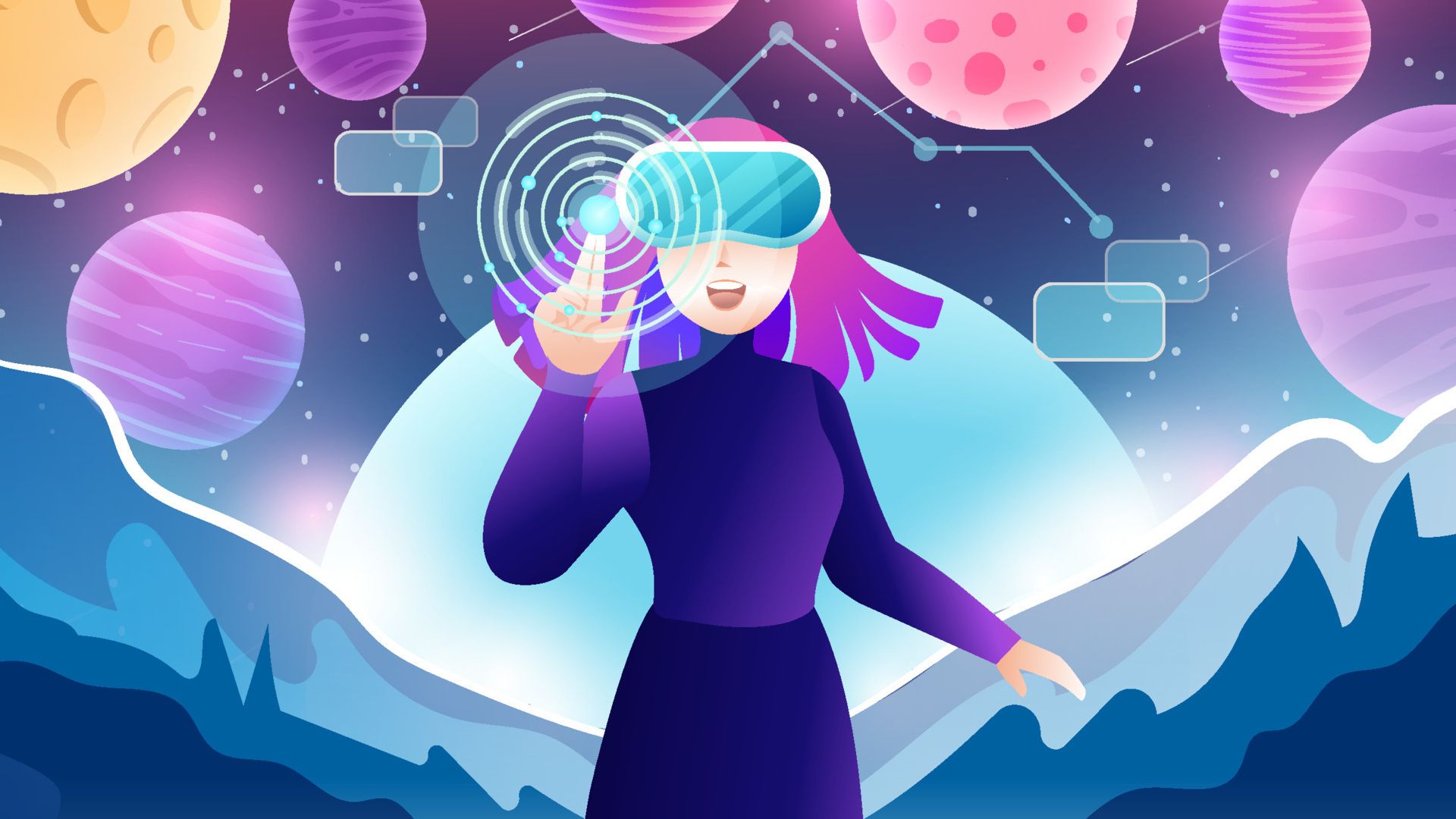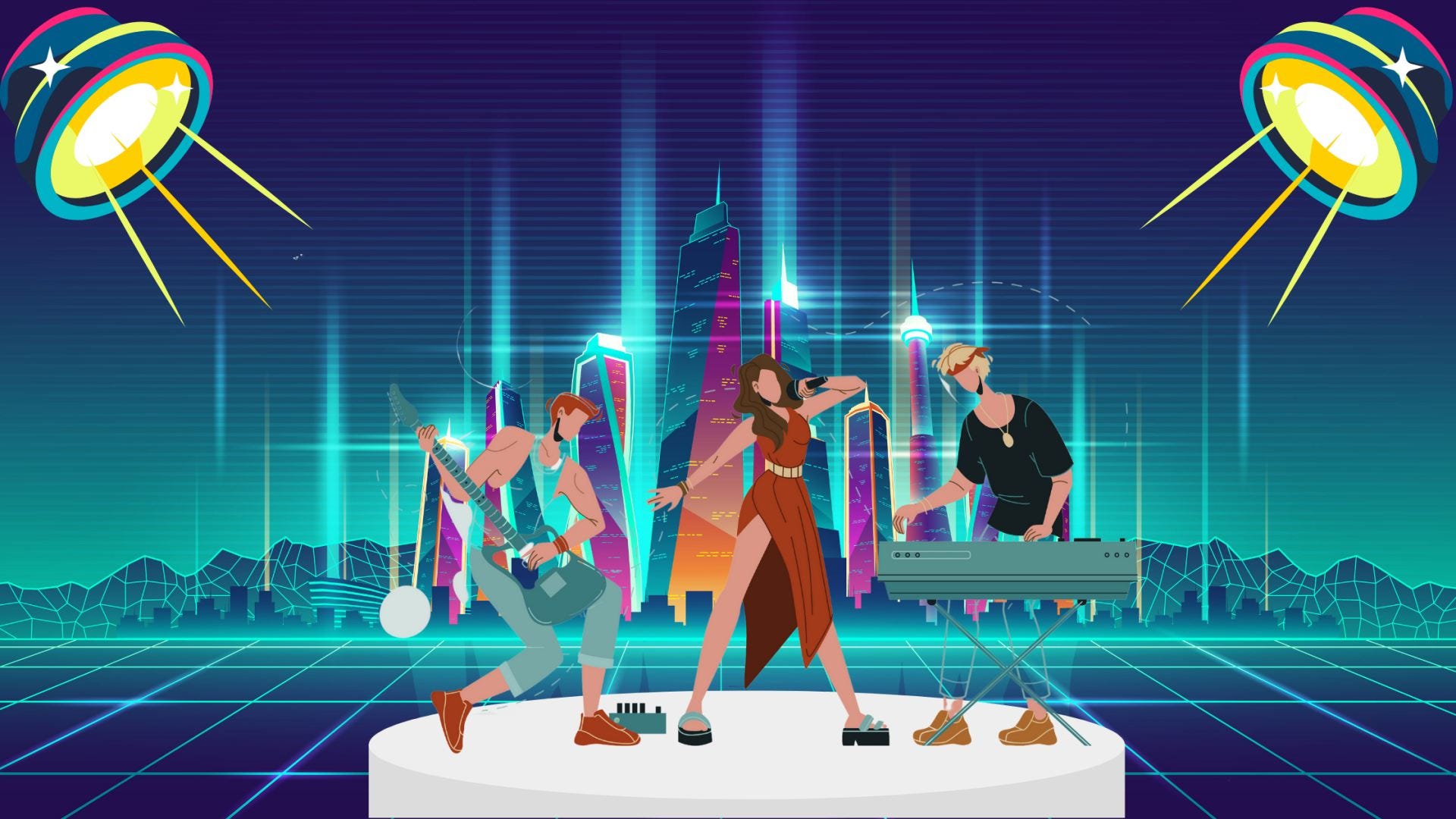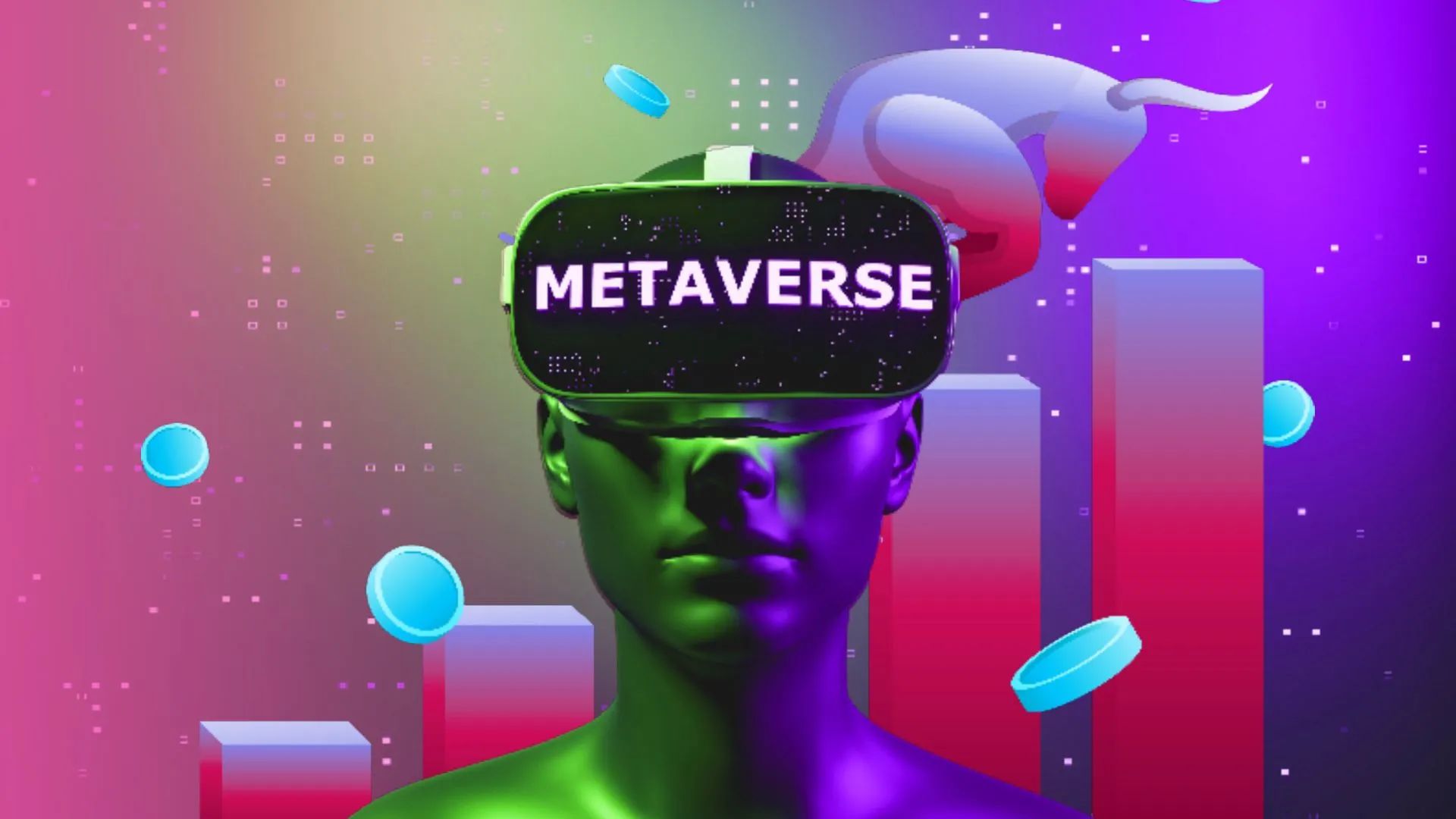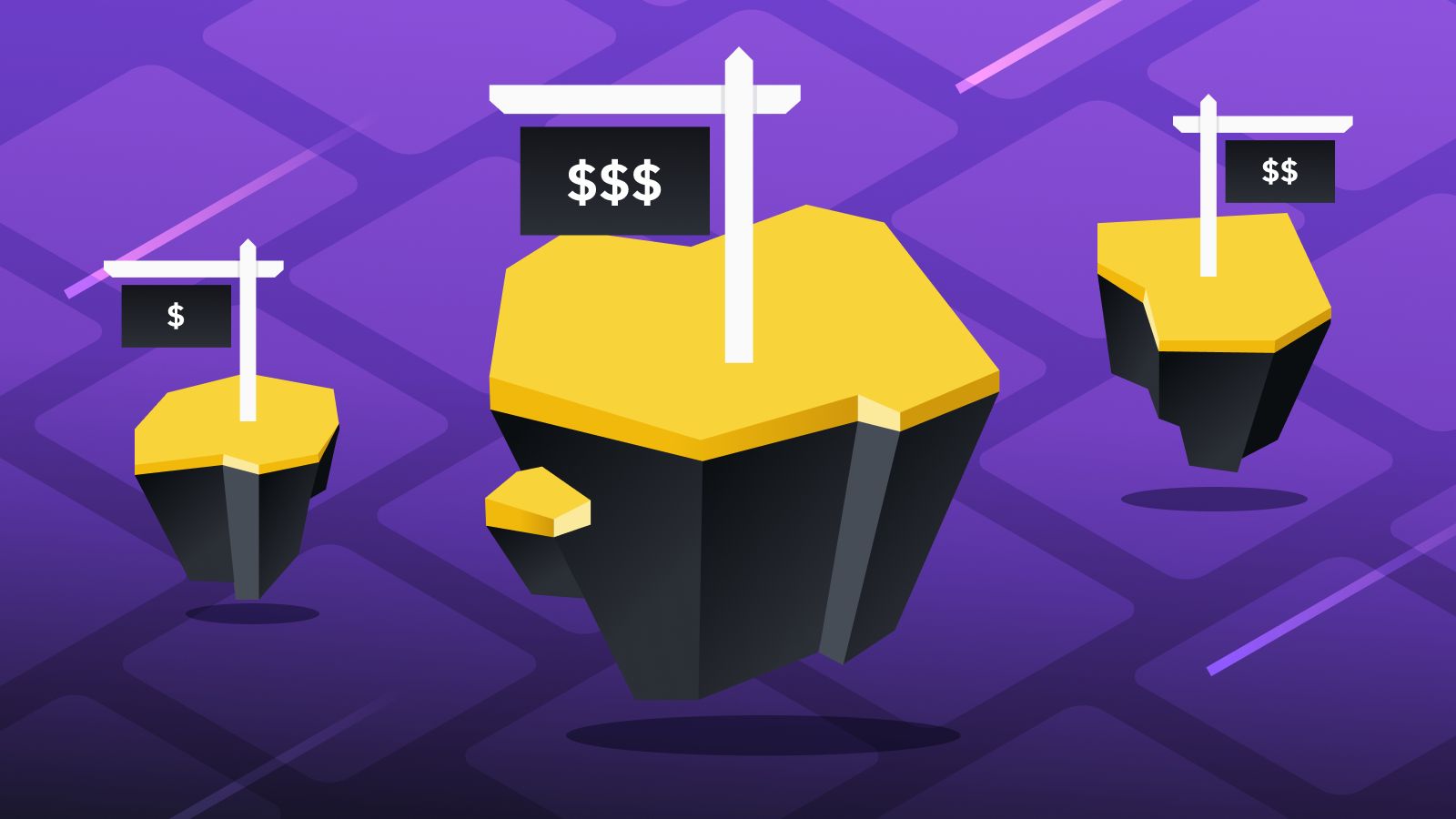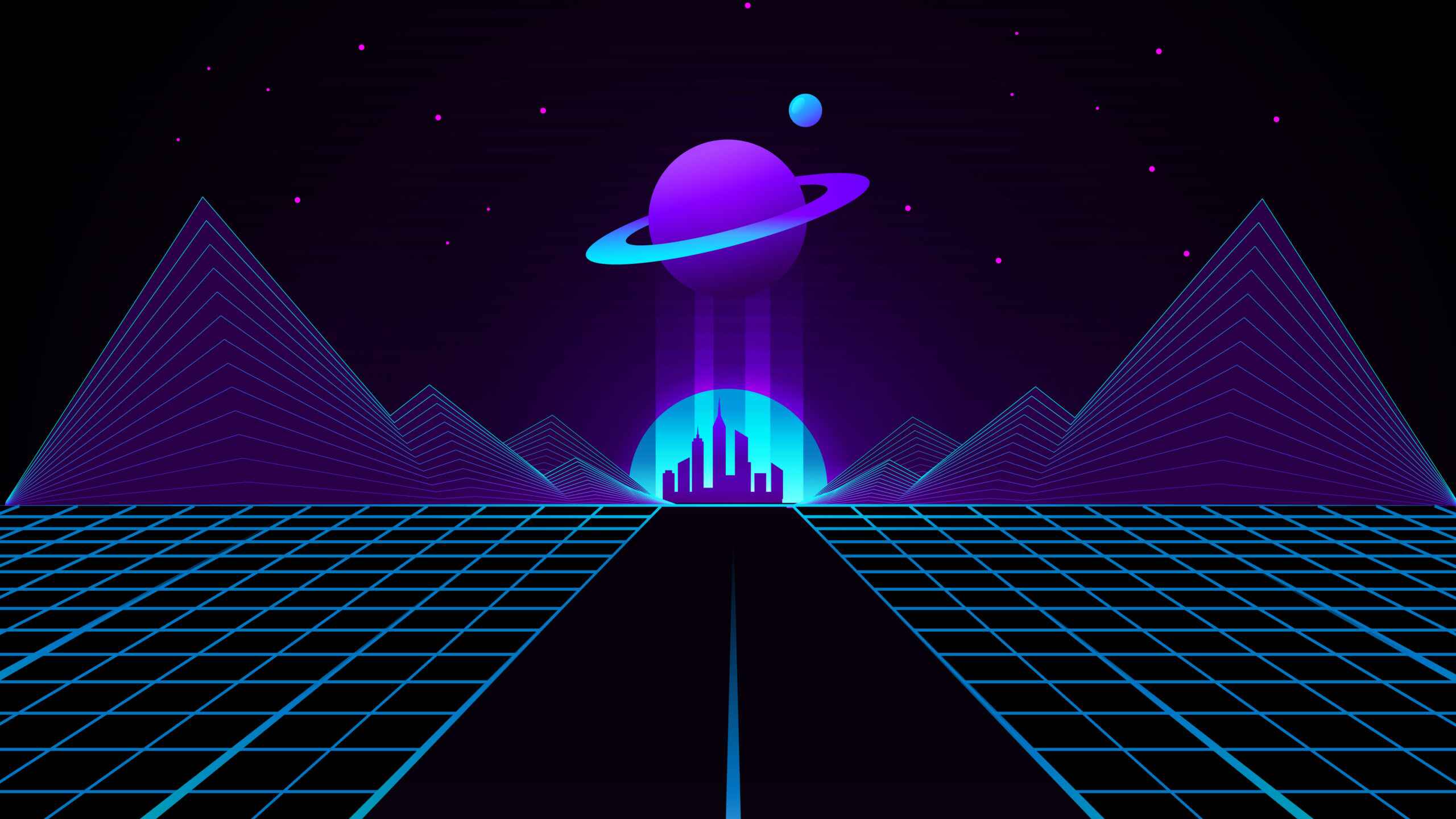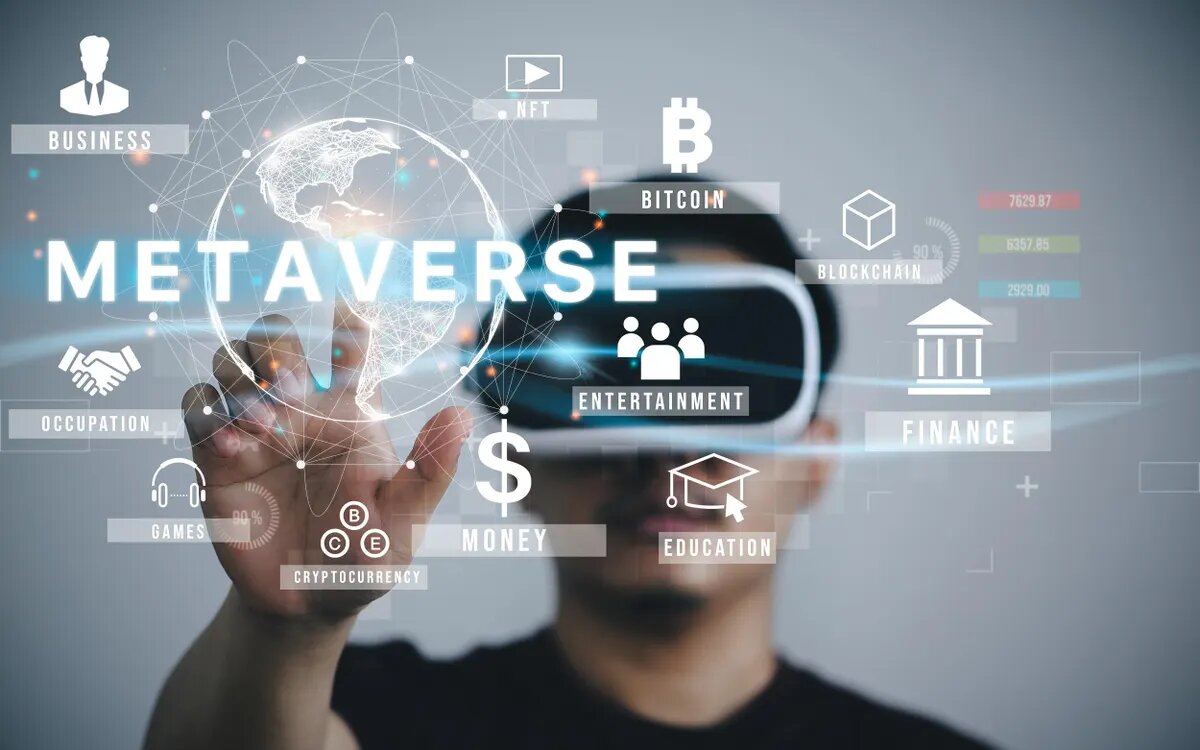Introduction
The world of technology is constantly evolving, and one term that has been making waves lately is the Metaverse. But what exactly is the Metaverse? Well, imagine a virtual universe where people can create, explore, and interact with each other in a digital space. It’s a concept that has captured the imagination of many, and is redefining the way we connect, work, and play. In this article, we will delve into the world of the Metaverse, exploring its definition, importance, and most importantly, the most popular Metaverse platforms that have gained traction in recent years.
The Metaverse, in essence, is a collective virtual shared space that is created by the convergence of virtual reality, augmented reality, and the internet. It allows users to move seamlessly between different digital environments, and engage in various activities such as socializing, gaming, shopping, and even attending virtual events. The concept of the Metaverse draws its inspiration from science fiction, and has been popularized by movies, books, and video games over the years.
The importance of the Metaverse lies in its potential to revolutionize the way we interact with digital content. It offers a new frontier for creativity, collaboration, and innovation. With the rise of the Metaverse, the boundaries between the physical and virtual world are blurring, enabling us to experience things in ways that were once only possible in our imagination. From virtual concerts and art exhibitions to virtual workplaces and educational experiences, the possibilities are endless.
Now that we have a basic understanding of what the Metaverse is and why it is important, let’s take a closer look at some of the most popular Metaverse platforms that have gained significant popularity and user engagement.
Definition of the Metaverse
The Metaverse is a concept that refers to a virtual universe, a collective virtual shared space that encompasses a vast array of digital environments. It is a convergence of virtual reality, augmented reality, and the internet, creating a seamless and immersive digital experience for users. In the Metaverse, individuals can explore, interact with others, and engage in various activities, blurring the boundaries between the physical and virtual world.
At its core, the Metaverse is built upon the idea of a persistent and ever-evolving virtual world. It is not confined to a single platform or game but exists across multiple platforms and experiences, allowing users to seamlessly move between different digital realms. This interconnectedness is what sets the Metaverse apart from traditional online experiences, enabling users to have a continuous, immersive, and interconnected digital presence.
The Metaverse is not limited to a specific purpose or function. It serves as a playground for social interactions, gaming, entertainment, education, commerce, and even virtual workspaces. Through the use of avatars, individuals can represent themselves in the Metaverse, interact with others, and personalize their digital identity. It offers opportunities for self-expression, collaboration, and creativity on a scale never seen before.
One of the defining characteristics of the Metaverse is its ability to evolve and adapt over time. It is a dynamic and ever-changing digital landscape, shaped by the collective actions and contributions of its users. Developers and content creators play a crucial role in shaping the Metaverse by building virtual worlds, designing experiences, and offering new opportunities for exploration and interaction.
It is important to note that the Metaverse is still a concept in development, and there is no singular, universally accepted version of it. Various companies and platforms are working towards creating their own interpretation of the Metaverse, each with its own unique features and offerings. As technology advances and new innovations surface, the concept of the Metaverse will continue to evolve and redefine our digital experiences.
Importance of the Metaverse
The Metaverse holds immense importance as it has the potential to shape the way we interact, connect, and engage with digital content. Here are some key reasons why the Metaverse is gaining significance in today’s digital landscape.
1. Unlimited Potential: The Metaverse offers virtually limitless possibilities for creativity, collaboration, and innovation. It provides a platform for individuals to create their own virtual worlds, design unique experiences, and share their creations with a global audience. From virtual art exhibitions to immersive gaming environments, the Metaverse allows us to explore and express ourselves in ways that were once unimaginable.
2. Enhanced Social Interaction: In the Metaverse, social interaction takes on a whole new dimension. People from across the globe can connect, communicate, and collaborate in real-time, regardless of physical distance. This opens up exciting opportunities for building communities, forging new friendships, and engaging in social activities that transcend traditional boundaries.
3. Transforming Industries: The advent of the Metaverse has the potential to disrupt and transform various industries. From virtual retail experiences that allow consumers to shop in a virtual environment to virtual workspaces that enable remote collaboration, the Metaverse is reimagining how we engage with commerce, education, entertainment, and more.
4. Economic Opportunities: The Metaverse presents new economic opportunities for content creators, developers, and entrepreneurs. It offers a platform to monetize virtual assets, create virtual experiences, and even establish virtual businesses. The growing popularity and user engagement in the Metaverse open doors for innovative business models and revenue streams.
5. Personalized Digital Identity: The Metaverse allows individuals to customize and represent themselves through avatars, creating a personalized digital identity. This offers a unique space for self-expression, freedom, and exploration of one’s interests and passions. It enables individuals to break free from traditional societal constraints and find their place in a diverse and inclusive digital world.
6. Escape and Entertainment: The Metaverse provides an escape from reality and offers immersive entertainment experiences. Whether it’s attending virtual concerts, exploring virtual worlds, or participating in multiplayer gaming experiences, the Metaverse creates a new realm of entertainment that pushes the boundaries of traditional media and experiences.
As the Metaverse continues to evolve and expand, its importance will only grow. It has the potential to reshape how we connect, create, and experience the digital world, offering a more inclusive, collaborative, and immersive future for us all.
Most Popular Metaverse: Overview
As the concept of the Metaverse gains traction, several platforms have emerged as popular destinations for users to engage in immersive digital experiences. While there are numerous Metaverse platforms available, we will take a closer look at some of the most popular ones that have garnered significant user engagement and attention. These platforms offer a range of activities, from socializing and gaming to creating and exploring virtual worlds. Let’s explore them briefly.
1. Decentraland: Decentraland is a decentralized virtual world built on blockchain technology. It allows users to create, buy, and sell virtual land, as well as build and interact with various virtual experiences. Decentraland offers a unique combination of social interactions, gaming elements, and digital asset ownership, making it a popular choice among Metaverse enthusiasts.
2. Roblox: Roblox is a user-generated gaming platform that has evolved into a thriving Metaverse. It provides a vast library of games created by its community of developers, offering a wide range of experiences for players. Roblox allows users to create their own games, explore virtual worlds, and interact with other players, making it a popular choice for both gamers and content creators.
3. The Sandbox: The Sandbox is a virtual gaming world that empowers users to create, own, and monetize their virtual experiences and assets. It combines elements of creativity, gaming, and virtual economy, allowing users to design and build their own virtual worlds and games. The Sandbox offers a collaborative and immersive environment for users to unleash their creativity and explore unique virtual worlds.
4. VRChat: VRChat is a social platform that enables users to create and customize their own avatars, explore virtual worlds, and engage in real-time social interactions. It supports both desktop and virtual reality (VR) experiences, allowing users to meet and interact with people from around the world. VRChat’s emphasis on socialization and user-generated content makes it a popular choice for virtual hangouts and digital events.
5. Fortnite: Although originally known as a popular battle royale game, Fortnite has now evolved into a metaverse-like platform. It offers a range of experiences beyond traditional gaming, such as virtual concerts, movie screenings, and immersive events. Fortnite’s integration of social interactions, entertainment, and user-generated content has made it a prominent player in the evolving Metaverse landscape.
These popular Metaverse platforms represent just a few examples of the diverse range of experiences available in the digital realm. They provide users with opportunities for social interaction, creativity, entertainment, and exploration, offering a glimpse into the future of the Metaverse. As the concept continues to evolve, it will be fascinating to witness the emergence of new and innovative Metaverse platforms that push the boundaries of what is possible in the digital world.
Metaverse 1: Decentraland
Decentraland is a popular Metaverse platform that has gained significant attention in recent years. Built on blockchain technology, Decentraland offers a decentralized virtual world where users can create, buy, sell, and explore virtual land and experiences. It combines elements of socialization, gaming, and digital asset ownership, creating a unique and immersive experience for its users.
One of the key features of Decentraland is the ability for users to own and trade virtual land. Using blockchain technology, each parcel of land in Decentraland is represented as a non-fungible token (NFT), providing users with true ownership of their virtual real estate. This ownership model allows users to build and monetize their virtual creations, whether it be virtual businesses, art galleries, or interactive experiences. It empowers users to express their creativity and entrepreneurial spirit within the digital realm.
Decentraland is designed to be a truly decentralized platform, enabling users to have full control over their virtual experiences. The platform operates on an open-source protocol, allowing developers to contribute to its growth and evolution. Users can interact with each other in real-time, engage in social activities, and collaborate on projects within the virtual world. Decentraland encourages user-generated content, fostering a vibrant and dynamic community of creators.
In Decentraland, users navigate the virtual world through their customizable avatars. These avatars can socialize, attend events, explore virtual lands created by others, and partake in various activities. With a focus on user experience, Decentraland offers an intuitive and immersive interface that allows users to seamlessly move between different areas and engage with the virtual environment.
The opportunities that Decentraland presents are vast. For creators, it provides a marketplace to showcase and monetize their virtual creations, whether it be artwork, clothing, or virtual services. For users, it offers a chance to explore unique virtual worlds, participate in events, and interact with a diverse community. Decentraland has also become a hub for virtual conferences, exhibitions, and virtual reality meetups, offering a new way to connect and engage with others.
As the Metaverse concept continues to grow, platforms like Decentraland play a crucial role in shaping the future of digital experiences. With its decentralized nature and focus on ownership and creativity, Decentraland exemplifies the potential of the Metaverse as a powerful tool for self-expression, collaboration, and economic opportunities within a virtual world.
Metaverse 2: Roblox
Roblox is a widely popular Metaverse platform that has gained immense popularity among both gamers and content creators. It is a user-generated gaming platform where players can explore a multitude of virtual worlds and engage in a variety of experiences. Roblox caters to a diverse range of interests, providing an expansive library of games and virtual activities for its growing user base.
One of the key aspects of Roblox is its user-generated content model. The platform empowers users to create their own games and virtual experiences, allowing them to express their creativity and imagination. Roblox provides a robust set of tools and a user-friendly interface that enables developers, both amateur and professional, to bring their ideas to life. This open and collaborative approach to content creation has contributed to the vast and ever-expanding ecosystem within Roblox.
With millions of games available on the platform, Roblox offers something for everyone. Whether it’s exploring virtual worlds, engaging in role-playing adventures, or participating in virtual events, Roblox provides a diverse range of experiences that cater to different interests and preferences. The platform encourages social interaction, allowing players to connect with friends, join communities, and even collaborate on projects within the virtual space.
Roblox also incorporates a virtual economy, where players can purchase virtual items, accessories, and avatar customization options using in-game currency called “Robux.” This virtual economy creates opportunities for developers and creators to monetize their creations by selling virtual items or offering exclusive in-game experiences. It provides a platform for entrepreneurial endeavors within the Metaverse, enabling developers to generate revenue and build virtual businesses.
What sets Roblox apart is its focus on accessibility. The platform is available on various devices, including computers, smartphones, and gaming consoles, allowing users to access and enjoy the multitude of experiences wherever they are. Furthermore, Roblox supports both 2D and 3D experiences, making it accessible to a broader audience and providing options for developers to create different types of games and experiences.
Roblox has also gained considerable attention for hosting virtual events and collaborations with popular brands, artists, and celebrities. From virtual concerts to movie screenings, Roblox has become a hub for immersive and interactive entertainment experiences. These events not only provide unique entertainment opportunities for users but also contribute to the platform’s ever-growing popularity.
In summary, Roblox has successfully captured the essence of the Metaverse by offering a vast and diverse collection of user-generated games and experiences. Its user-friendly creation tools, virtual economy, and accessibility have attracted a large and dedicated audience. Roblox is not only a gaming platform but also a thriving Metaverse that fosters creativity, collaboration, and social interaction within its expansive digital realm.
Metaverse 3: The Sandbox
The Sandbox is a Metaverse platform that offers a unique combination of gaming, creativity, and virtual ownership. It is a virtual gaming world where users can build, own, and monetize their virtual experiences and assets. The Sandbox leverages blockchain technology to provide true ownership and scarcity of digital assets, allowing users to express their creativity and unlock economic opportunities within the virtual realm.
One of the standout features of The Sandbox is its user-friendly and intuitive game creation tools. Users can design and build their own virtual worlds, games, and experiences using a simple and accessible interface. The platform provides a wide array of creative assets, including characters, objects, and environments, which can be customized and combined to bring unique ideas to life. This empowers users to unleash their creativity and build their own virtual realms without requiring extensive programming or design knowledge.
The Sandbox operates on a decentralized ecosystem, where virtual assets are stored and traded as non-fungible tokens (NFTs) on the blockchain. This ownership model ensures that users have true ownership and control over their virtual creations. It also creates a marketplace where users can monetize their digital assets by selling or renting them to other users. This innovative approach fosters a vibrant economy within The Sandbox, enabling creators to generate revenue from their creative endeavors.
The virtual worlds and experiences within The Sandbox are interconnected, allowing seamless exploration and social interaction. Users can visit each other’s creations, collaborate on projects, and engage in multiplayer experiences. This social aspect of The Sandbox encourages community participation and fosters a strong sense of belonging within the virtual realm.
The Sandbox also serves as a platform for artists and creators to showcase their work. The platform supports the creation and display of virtual art galleries, music experiences, and interactive exhibitions. This provides opportunities for artists to reach a global audience and monetize their work within the Metaverse.
In addition to user-generated content, The Sandbox has also partnered with well-known IPs and brands, bringing popular characters and franchises into the virtual world. This collaboration provides unique and immersive experiences for users, further enriching the offerings within The Sandbox and attracting a wider audience.
Overall, The Sandbox embodies the virtues of creativity, ownership, and economic opportunity within the Metaverse. Through its user-friendly creation tools, blockchain-based ownership model, and collaborative social environment, it has become a hub for virtual exploration, creativity, and economic potential. The Sandbox invites users to immerse themselves in a world where their imagination knows no bounds, fostering a vibrant and dynamic community of creators within the Metaverse.
Metaverse 4: VRChat
VRChat is a popular Metaverse platform that allows users to create, explore, and socialize in virtual worlds. It offers a unique blend of virtual reality (VR) and social interaction, making it a captivating destination for users seeking immersive experiences and meaningful connections within the Metaverse.
At the core of VRChat is the emphasis on socialization. Users can create and customize their own avatars, representing themselves in the virtual world. This avatar-based system enables users to express their individuality and engage in real-time interactions with other users. Whether it’s participating in virtual events, joining communities, or simply hanging out in virtual spaces, VRChat fosters a sense of presence and connection within its virtual environment.
VRChat supports both VR and desktop modes, making it accessible to a wide range of users. While VR users may have a more immersive experience, desktop users can still navigate and interact with the virtual world in a meaningful way. This inclusivity has contributed to VRChat’s popularity and growing community.
One of the standout features of VRChat is its vast library of user-generated content. Users can create and upload their own virtual worlds, avatars, and interactive experiences. This user-generated content fosters creativity and diversity, ensuring that there is always something new to discover within the platform. From exploring beautifully crafted fantasy worlds to attending virtual concerts and art exhibits, VRChat offers a wide range of experiences for users to enjoy.
VRChat is also known for its vibrant community and sense of camaraderie. Users have the opportunity to meet and interact with people from around the world, forging new friendships and connections within the virtual realm. The platform encourages collaboration and community engagement, allowing users to organize and participate in virtual events, meetups, and activities.
In addition to its user-generated content, VRChat has also partnered with various IPs and brands, bringing recognizable characters, virtual items, and experiences into the virtual world. This collaboration enables users to engage with popular franchises and adds an extra layer of excitement to the VRChat experience.
VRChat provides a platform for both entertainment and self-expression. It blurs the boundaries between the virtual and real world, offering users an escape from reality while fostering human connections and personal growth. With its immersive VR capabilities and robust social features, VRChat has become a key player in the Metaverse landscape, offering a truly unique and engaging virtual experience for its dedicated community.
Metaverse 5: Fortnite
Fortnite, originally known as a popular battle royale game, has evolved into a dynamic and immersive Metaverse platform. It offers a wide range of experiences beyond traditional gaming, making it a prominent player in the evolving Metaverse landscape. Fortnite seamlessly combines elements of gaming, socialization, and virtual events to create a vibrant and interactive virtual world.
One of the defining features of Fortnite is its ability to host virtual events and experiences. The platform has hosted virtual concerts featuring internationally renowned artists, attracting millions of players to participate in real-time, interactive music experiences. These virtual events showcase the potential of the Metaverse, blurring the lines between the real and virtual world, and providing unique and immersive entertainment opportunities for a global audience.
Fortnite also acts as a social hub, allowing players to connect with friends and engage in various social activities. Players can form parties, join communities, and participate in collaborative gameplay experiences. The social aspect of Fortnite extends beyond gameplay, with features such as in-game chat, voice communication, and the ability to create and share content with others within the platform.
In addition to its social features, Fortnite offers customizable avatars and a plethora of cosmetic items that allow players to personalize their appearances. The ability to express one’s unique style and personality within the virtual world fosters a sense of individuality and identity for players.
Fortnite’s integration of user-generated content is another notable aspect of the platform. It allows players to create and share their own game modes, maps, and creative projects. This user-generated content not only showcases the creativity of the Fortnite community but also provides endless possibilities for gameplay and exploration within the virtual world.
Fortnite’s influence extends beyond its in-game experiences. It has become a cultural phenomenon, with its dances, emotes, and iconic characters permeating popular culture. The platform has collaborated with well-known IPs and brands, bringing recognizable characters and themed events into the virtual world. These collaborations add a fresh and exciting dimension to the Fortnite experience, attracting a diverse range of players.
Another aspect that sets Fortnite apart is its cross-platform compatibility. Players can access and enjoy Fortnite on various devices, including PCs, consoles, and mobile devices. This accessibility contributes to its widespread popularity and the ability for players to connect and engage with others regardless of their chosen gaming platform.
In summary, Fortnite has evolved into a full-fledged Metaverse platform, offering a fusion of gaming, virtual events, social interactions, and user-generated content. Its ability to host immersive virtual concerts, foster social engagement, support user creativity, and collaborate with popular IPs has solidified its position as a major player in the Metaverse landscape. Fortnite continues to push the boundaries of what is possible within a virtual world, captivating players and providing innovative and engaging experiences within its expansive digital realm.
Conclusion
The Metaverse has emerged as a revolutionary concept that is reshaping the way we interact, create, and explore in the digital world. It encompasses virtual universes where people can connect, collaborate, and engage in a multitude of activities with seamless connectivity between different platforms and experiences.
Throughout this article, we have explored the definition and importance of the Metaverse, as well as delved into the most popular Metaverse platforms that have captured the attention and imagination of users worldwide. From platforms like Decentraland, where users can own virtual land and monetize their creations, to Roblox, which offers a massive collection of user-generated games and experiences, these platforms exemplify the diversity and creativity within the Metaverse.
We also explored The Sandbox, a platform that embraces user-generated content and blockchain-based ownership, and VRChat, a platform that combines virtual reality and socialization to foster connections and community. Lastly, Fortnite showcased how a widely popular battle royale game has transformed into an immersive Metaverse platform, hosting virtual events and enabling social interactions and user-generated content.
The Metaverse holds tremendous potential to revolutionize the way we interact, work, learn, and entertain ourselves. It offers unlimited possibilities for creativity, collaboration, and economic opportunities. As technology continues to evolve, we can expect the Metaverse concept to evolve as well, with new platforms and experiences pushing the boundaries of what is possible within the virtual realm.
As users, creators, and participants, we are entering an era where the virtual and physical worlds are no longer separate entities but rather interconnected spaces. The Metaverse represents a new frontier of digital experiences that transcends traditional boundaries, offering a dynamic and immersive realm that invites us to explore, connect, and create in ways that were once unimaginable.
In conclusion, the Metaverse is a paradigm shift that brings us closer to a new era of digital experiences. It is a world of boundless imagination, where individuals can connect and create without limitations. As we venture into this exciting new frontier, the potential for innovation, collaboration, and personal growth within the Metaverse is immense. The future of the Metaverse holds promises of a more interconnected, immersive, and inclusive digital landscape that will continue to shape the way we live, work, and play in the years to come.







